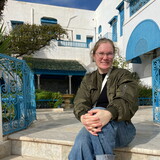Nebraska Wesleyan University was closed for Martin Luther King Day. But January 18 was most certainly a workday for one NWU alumna. In fact, it’s her biggest workday of the year.
Tracy Lauritzen Wright (’93) is director of museum partnerships and compliance at the National Civil Rights Museum (NCRM) in Memphis, Tenn. The museum occupies the Lorraine Motel, where King was assassinated on the evening of April 4, 1968. His room, 306, is preserved, and a wreath hangs on the balcony where he last stood.
The history and global studies major’s first task when she joined the NCRM in 2000 was to catalogue the museum’s collection of evidence from the assassination investigation. That evidence led to James Earl Ray’s murder conviction in the spring of 1969.
Before acquiring this evidence, the museum had no intention of serving as a collecting institution, Lauritzen Wright said. But her work on this invaluable trove helped change that. She would eventually lead the museum’s $27.5 million renovation and help to oversee its shift in mission “from commemoration to utilization.”
She said, “We want our visitors to connect with history and apply it to issues today.”
When asked the public’s largest misconception about the American civil rights movement, she answered quickly: “That it’s over.”
The task of advancing civil rights, of course, continues today in many forms. “We have a lot of work to do in forming a more perfect union,” Lauritzen Wright said.
The National Civil Rights Museum plays an important part in that work. Lauritzen Wright pointed to a sign that hangs near the museum entrance.
It reads: The story and the struggle continue today with you.






















